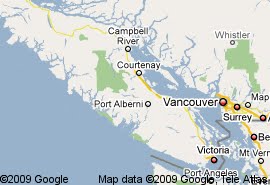Water computing' breakthrough? Tiny water droplets harnessed to perform computational logic
Saturday, September 29, 2012 by: Jonathan Benson, staff writer(NaturalNews) What if it were possible to perform basic computational functions on a novel device that utilized nothing more than tiny water droplets and water-resistant materials, rather than the circuits, chips, and electricity that most computational devices utilize today? Such a device could one day become a reality thanks to new research out of Aalto University (AU) in Finland, which has unlocked a whole new realm of possibility for harnessing the power of water in computing.
Though it may not power a mobile phone or laptop computer anytime soon, the transformation of water micro-dots into "digital bits" holds a lot of promise in potentially changing the way certain computational systems of the future are designed. Published in the journal Advanced Materials, the new research sheds light on how future systems may one day be able to perform simple computing functions without the need for electricity, an astounding discovery that was actually very simply demonstrated.
The investigation began after AU researchers observed that, rather than combine with one another to form larger drops, tiny water droplets on a water-repellant surface bounce off one another in a similar way to how billiard balls bounce off one another on a pool table. This observation inspired the researchers to construct a water-repellant system in which the water droplets could be guided along tracks and made to encounter various sequences.
Using water to perform basic computational functions
In one sequence, a trail of micro-dots was directed to a fork in the track where it encountered other micro-dots. Researchers observed that when the first micro-dots were allowed to collide with the second micro-dots at the fork, the second micro-dots alternated equally as they moved, one after the other, between the two sides of the fork, a process that was repeated 100 times without error. This phenomenon demonstrated how water can be used in a type of "flip-flop memory" setup, which is similar to the setup in computer memory."I was surprised that such rebounding collisions between two droplets were never reported before, as it indeed is an easily accessible phenomenon," said Henrikki Mertaniemi, an applied physics researcher at AU, to Live Science about the discovery. "I conducted some of the early experiments on water-repellant plant leaves from my mother's garden."
In another experiment, the team demonstrated how water computing could be used to create "programmable chemical reactions." By loading micro-dots with certain chemicals, researchers were able to contrive a system in which, upon collision, water droplets containing various chemicals mixed with each other to trigger a specific chemical reaction. When programmed to occur at a precise time and place, these collisions were able to be used as "miniature reactors" for various computing processes.
"It is fascinating to observe a new physical phenomenon for such everyday objects," added Robin Ras, an Academy Research Fellow in the Molecular Materials research group at AU, in a statement.
You can learn more about this fascinating water computing project by visiting:
http://www.aalto.fi/en/current/news/view/2012-09-06-003/
Sources for this article include:
http://www.livescience.com
http://www.redorbit.com
http://www.globalpost.com
'Water computing' breakthrough? Tiny water droplets harnessed to perform computational logic
Link to source: http://www.naturalnews.com/037355_water_computing_breakthrough_logic.html

No comments:
Post a Comment